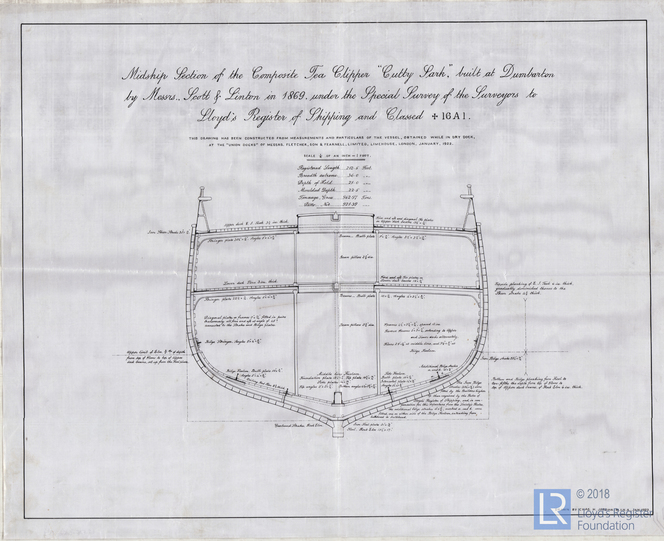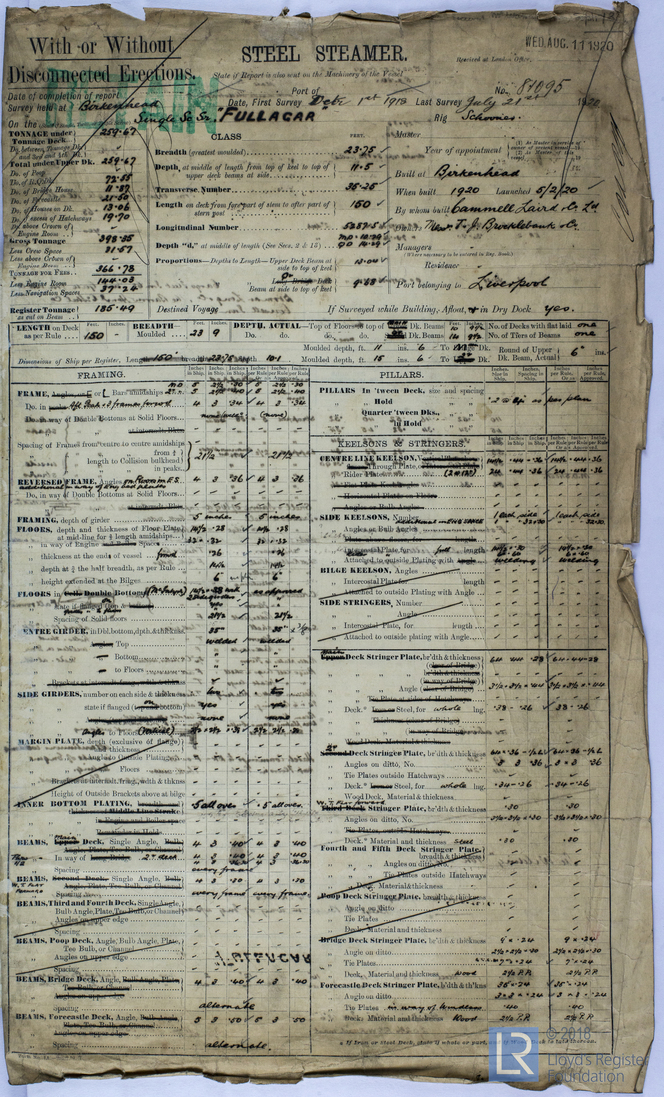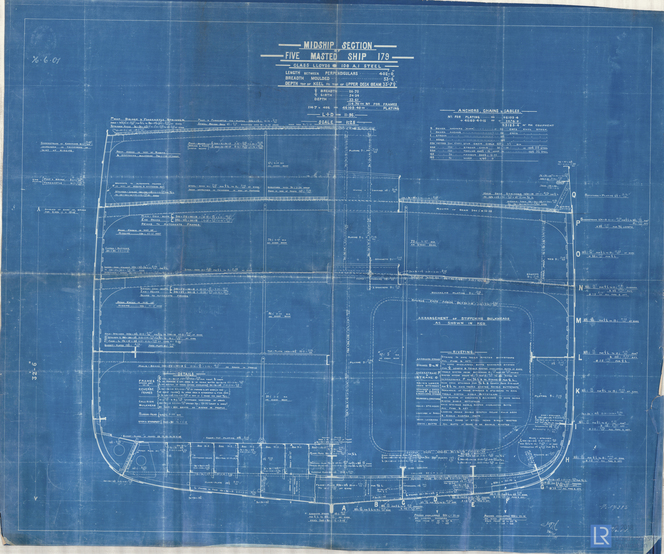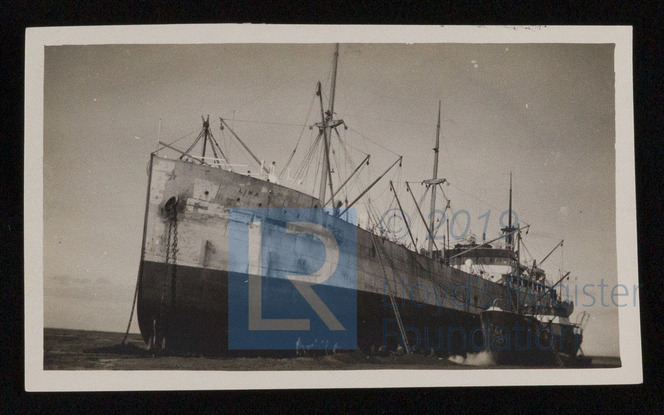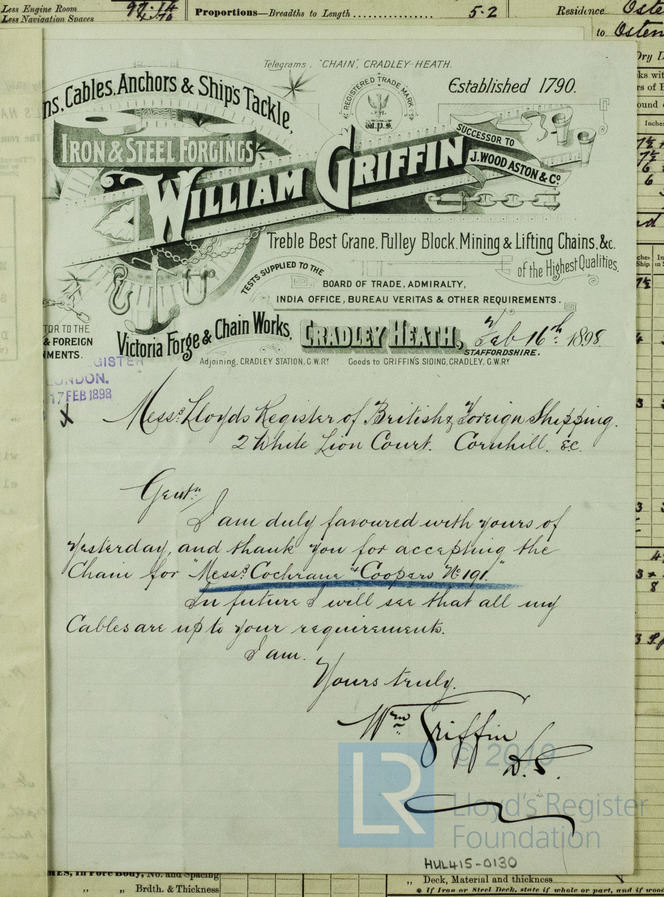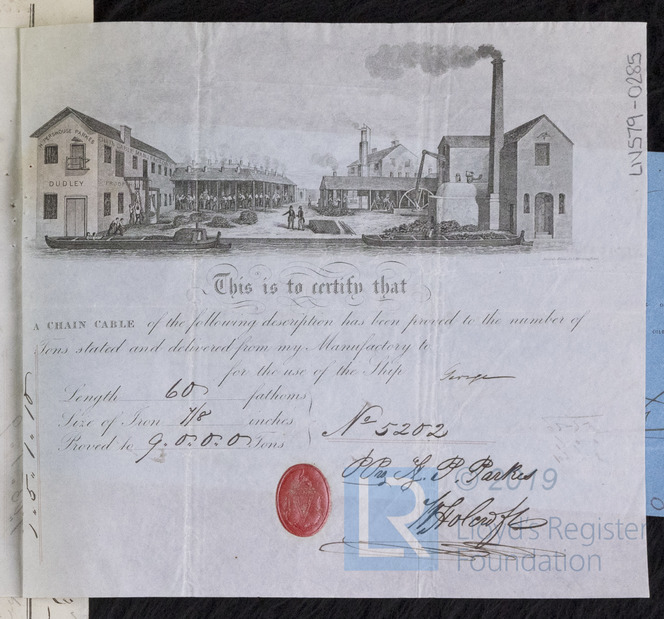What is the Ship Plan and Survey Report collection?
The collection holds an estimated 1.25 million documents relating to ships that Lloyd’s Register classed from the 1830s to the 1960s. This collection holds a plethora of document types, from handwritten correspondence and telegrams, to survey reports, ship plans and photographs.
Offering an incredible source of information on maritime history and trade, the collection is a great resource for research in a number of areas (maritime history, ancestry, cartography, economic). By digitising the collection, the Heritage & Education Centre (HEC) is maximising the material’s educational potential to reach a global audience. Offering these resources for free will help us fulfil our mission of enhancing public education in marine, engineering, science and history.
Where is the collection?
Originally, the collection was held at White Lion Court after Lloyd’s Register’s then Chairman, Thomas Chapman, ordered that the Society retain its ship plans and survey reports. When Lloyd’s Register moved to 71 Fenchurch Street, the collection followed, before later being stored at the Royal Museum Greenwich’s Brass Foundry in Woolwich.
Today, the collection is stored at a specialist archive facility in Woolwich. The space also houses the Heritage & Education Centre’s project team. The digitisation team Max Communications are very close by and having the digitisation specialists working so closely potential risks are mitigated, including transportation damage, loss, pest control and more.
Research
The diversity of the digitised materials and level of detail in the catalogued records means that researchers from many backgrounds can utilise the information contained within the collection. Maritime history enthusiasts can track the career of a ship from launch to wreck, graphologists can discover the differences in surveyors’ writing styles across the world, economists can map trade routes using survey reports, and ship model builders can create scale replicas using information contained within survey reports and plans.
Exhibitions and Events
The Centre’s digitised content is also being used for outreach, exhibitions and events. The first batch of digitised content has already been utilised in two international exhibitions –Waterproof: Safety at Sea (Rotterdam Maritime Museum) and the Wall of Veen (Veenkolonial Museum).
We have recently hosted popular Open House events and Heritage Open Days. These events, which had hundreds of attendees, are complemented by smaller group tours with university students and research groups. We are also pleased that two of our LRF-funded Thomas Chapman Scholars have extolled the virtues of our archive at our 2019 international conference.
New HEC-led activities are also currently in development to further publicise and engage people with the collection. These include guest lectures, podcasts and web seminars.
Grant Holder Network
Enhancement of the collection’s educational potential will also see grant holders, such as the 1851 Trust, and the Lloyd’s Register Foundation funded Curator of Contemporary Maritime at Royal Museums Greenwich, use HEC’s digitised materials for various programmes. The collection’s global reach and relevance ensures that the Foundation’s challenge led approach for increasing impact in public education is met.
The 1851 Trust has been particularly successful in its campaign to promote the STEM disciplines to schoolchildren. Their STEM Crew project has used our archives to create three educational resources for 11-16 year olds. The first in the series was the project’s most popular resource in its first eight weeks. In February 2020, they launched the second in this series. To find out more, do visit our grant holder page.
Numbering
Prior to a document being captured, it is numbered with a unique reference code, ensuring it is tracked and can be synced with its catalogued data and imagery.
Capturing
The document is then picked up by the capture team. Specialist camera rigs have been designed to photograph every document size, from small telegrams to massive ship plans.
Indexing and Splitting
The document images are then uploaded to Themis - Max Communications’ browser based tool for digitisation management and metadata indexing.
A document’s images are split and given page numbers. This is then combined with the unique reference code so that the cataloguers can map the correct metadata for a document on a specific page.
Transcribing
Now that the digitised documents are organised with their metadata, cataloguers transcribe the information contained within the documents directly from a digitised image.
Quality Assurance
Catalogued documents are then assessed by the Max Communications quality assurance team.
Checks include correct document numbering is used, changes in ship name map accordingly and that the digitised images are of good quality.
If any issues are raised by the Max Communications QA team, members of the Centre’s digitisation team provide support and clarifications.
Digitial Preservation
The final digitised document and data is then transferred into the digital preservation server and then the Centre’s Content Management System (CMS).
From the CMS, the documents are published to the HEC website and made freely available to a worldwide audience for research


